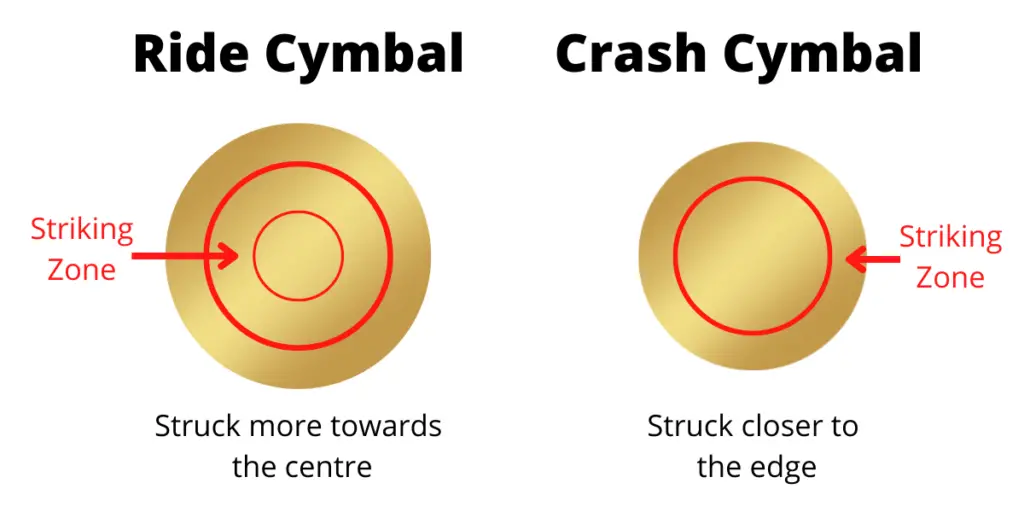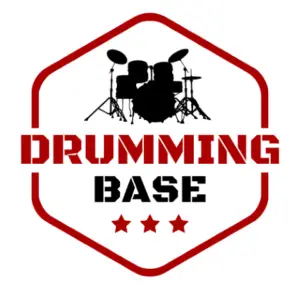If you want a leaner drum kit then you may be wondering if you can use your crash cymbal as a ride cymbal and ditch your ride cymbal entirely. Or you might just want to know if riding the crash cymbal is even really possible. Here’s the quick answer.
It is possible to use a crash cymbal as a ride by hitting it between the bell and edge using the tip of the drumstick. However, riding the crash cymbal is usually only done during very high-energy sections of a song as it can sound muddy as the crash cymbal has a lot of shimmer and sustain.
Comparing Crash and Ride Cymbal
Crash and ride cymbals are fundamentally different in two ways:
- Crash cymbals are thinner and lighter than ride cymbals
- Crash cymbals have a smaller diameter (14″-18″) compared to ride cymbals (18″-22″)
Crash cymbals have more sustain and shimmer compared to ride cymbals, and also have a higher pitch so sound brighter. Ride cymbals have more “ping” and produce a shorter, snappier sound which is warmer and more mellow due to the lower pitch.
Check out this article comparing crash and ride cymbals to learn more.
The action of “crashing” and “riding” can be done on any cymbal, and refers to how it is actually struck. It’s just that specific crash and ride cymbals are designed to fit those functions and produce the best sound.
- To crash a cymbal, you strike it on the edge using the shoulder of the drumstick
- To ride a cymbal, you strike it towards the centre using the tip of the drumstick

Riding a Crash Cymbal
Okay so what happens if you ride a crash cymbal, meaning that you hit it more centrally (between the bell and the edge) using the tip of the drumstick instead of using the shoulder to hit it on the edge?
The sound will be:
- Quieter
- Have less shimmer
- Have less sustain
So what about the difference between riding a crash cymbal, and riding a ride cymbal?
The ride cymbal will have more “ping” and sound more mellow and less washy compared to the crash cymbal. The crash cymbal will still have a lot of sustain (more so than a ride cymbal) even if struck towards the centre, which makes everything sound a bit muddy.
This is typically why a crash cymbal is not used as a ride, as you won’t get enough “ping” and the notes won’t be as cleanly separated (which is what you need for keeping the rhythm).
However, if you’re looking for a lot of noise during a high-energy section of the song, then you can ride the crash cymbal. Just be aware it will sound a bit messier and very aggressive.
Check out this YouTube video to hear a drummer riding the crash cymbal.
Which Crash Cymbals are Best to Use as a Ride?
If you want to ride your crash cymbal, consider one with a larger diameter and thicker construction. This will make it sound a bit less bright and give it a heavier and more mellow sound.
The best option is to use a dedicated crash/ ride or ride/ crash cymbal if you want to use one cymbal for both functions. A crash/ ride cymbal will favour the “crash” function, whereas a ride/ crash cymbal will favour the “ride” function.
These types of cymbals have a more moderate thickness and diameter to allow them to sound good when used for both crashing and riding.
Check out this article on crashing the ride cymbal for the answer to the opposite question!

